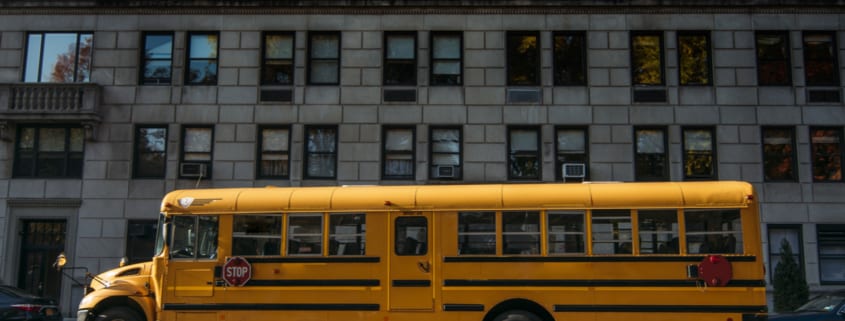School Districting, Property Value, and Multifamily Housing
It is easy to assume that school districting is primarily a residential real-estate concern, but understanding how multi-family residents are influenced by this information can give CRE firms an advantage when it comes to making smart development choices. As we have discussed previously, many Millennials are having fewer children and making their housing arrangements accordingly. Those who do choose to become parents consider the school districts of properties when they make their buying and renting decisions. Lower-income residents who seek educational opportunities for their children are willing to sacrifice amenities and convenience in order to get their children into top-performing schools. At the very least, developing in a desirable school district attracts long-term renters of all income levels and buyers in higher-earning demographics.
The Influence of Zoning
Knowing the zoning laws in metropolitan development areas is crucial to making smarter choices about districting and how it attracts renters and buyers. Zoning laws that are more inclusionary may drive down the desirability of a property, as the income diversity of residents can play a role in school performance, making test scores more equal across districts. More exclusionary zoning laws make better performing schools a selling point for potential residents. According to one Brookings report, anti-density zoning restrictions prevent the incorporation of “affordable” multifamily housing due to overcrowding concerns. This makes access to top-performing schools more exclusive, which drives profit.
The Effects of Public and Private Education Costs
It’s important to keep in mind that public schools are a service provided by the government because, unlike their private counterparts, there is no tuition charged to parents for their children’s attendance. Given the choice between a larger, single-family home or a multifamily development, many parents find that it is more cost-effective to live in a multifamily arrangement and send their children to a better public school for free than to opt for more space and the exorbitant cost of a private education. Private School Review estimates the annual cost of private education to be $10,413, or $868 a month, and private schools often require additional costs which may not be immediately evident. For example, transportation and meals can sway parents to opt for public school because most private schools do not offer a bus service and may not have a full-service cafeteria. Even households with a stay-at-home parent are inconvenienced by the daily time and cost of transportation and preparing or purchasing meals.
The Impacts of Districting
Commercial development and school districting are closely related. Developer fees can be a deterrent to CRE firms seeking to develop both commercial and residential spaces. School Facility Needs Analyses completed by the local school district estimate how many students new housing development will add to the district and charge accordingly per square foot. For commercial and industrial projects, districts use the number of potential employees occupying commercial spaces to estimate a number of school-aged children, which determines the fees. These fees can accumulate quickly, but it’s important to keep in mind that any district will require these fees, so purchasing properties in better performing areas doesn’t necessarily drive up cost and may boost profit.
Priorities of Renters
When developing or redeveloping multifamily spaces, having an awareness of tenant perspective is a good rule of thumb. Knowing what attracts renters helps keep occupancy rates high and this contributes to higher returns on investment. Renters often have a different, more flexible mentality than buyers when it comes to living arrangements. According to The New York Times, some renters who cannot afford to buy in a district will rent in order to take advantage of the educational opportunities while maintaining mobility. This gives tenants a safety buffer against possible redistricting. If their children are assigned to a different school, they can still move again when their lease expires without the heavy financial ties of buyers.
Parents with school age children are motivated to reside within preferable districts because it is often the less expensive option overall, once the costs associated with other school arrangements are taken into consideration. Zoning laws that are more exclusionary help to keep public schools’ desirability stable, and school districting can either help or hurt property value. Because districts can be redrawn, many renters find multifamily housing a safer, more convenient way to get their kids into top performing schools. Keeping these factors in mind will help ensure that the wisest investment choices are being made.
Interested in learning more about what attracts Millennial renters? Read our blog post on using tenant experience to boost occupancy.











